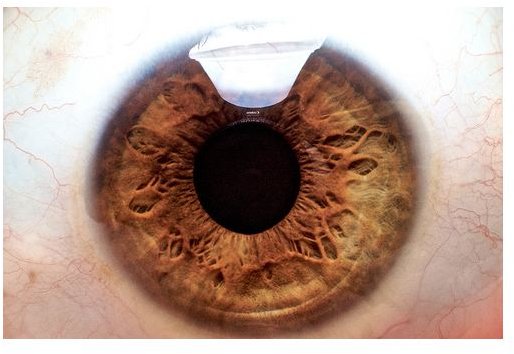All About Intraocular Melanoma
Eye Cancer
When cancerous cells form in the middle layer of the eye tissue, called the uvea, it is known as intraocular melanoma. This is a malignant and very rare form of cancer. If caught while the tumor is still small and before it has spread, it is possible to cure the disease while also retaining vision. They key to beating this form of eye cancer is early detection and early treatment. Are you at risk for this disease? Would you know how to recognize the signs? What will your doctor do to diagnose the illness, and what treatment options are available for patients suffering from eye melanoma?
Risk Factors
Who is at risk for this type of cancer of the eye? Are there certain things that will cause it? There is no specific cause of eye melanoma but there are risk factors. For the most part older age and sun exposure are the major risk factors. Having fair skin, freckles, and blue or green eyes also increases risk. Long-term exposure to artificial light from tanning beds can also put you at risk for this type of cancer.
Signs and Symptoms
The following signs may or may not be present if the cancer is present. Especially during the early stages of the disease you may not experience any signs. Possible symptoms include:
- Blurred vision
- Change in vision
- Change in pupil shape
- Dark spots in the iris
- Eye pain
- Eye redness
- Nausea
Talk to your doctor if you have any trouble with your vision. Eye pain and redness may only occur if the cancer causes a separation of the retina from the eye, so do not wait for this symptom especially if you are at risk for the disease.
Diagnosis
How is this form of eye cancer, or any tumor in the eye tissue for that matter, diagnosed? A series of tests are done to look for the presence of a growth and to evaluate it’s size and extent.
With a slit-lamp exam the doctor will use a narrow beam of light to look beyond the outer layer of the eye. They can also use this method to take pictures of the tumor and track it’s growth.
Indirect ophthalmoscopy is a procedure using a magnifying lens and a light to examine the back of the eye. Again, the point of this exam is for the doctor to see what is going on in the middle tissue of the eye.
An ultrasound can also be used to detect the tumor. Eye drops numb the eye and then a probe is placed on the eye to send and receive sound waves. The echos of these waves basically take a picture of the inside of the eye.
To take a look at the blood vessels and blood flow within the eye a procedure called fluorescein angiography can be used. A fluorescent dye is injected into the arm. As the dye travels to the eye a picture is taken of the retina to detect any abnormalities.
Treatment
How can this rare form of cancer be treated? If a tumor is small enough and confined to the tissue of the uvea it is possible that the cancer can be successfully removed with a surgical procedure without affecting vision. Depending on the stage of the cancer it may also be necessary to remove the entire eye.
A specific form of radiation therapy known as plaque therapy has also been used to destroy a tumor. A small object is sutured to the wall of the eye. It supplies enough radiation to kill the cancer and it is then removed.
Laser therapy is another treatment option. A laser light is used to kill the blood vessels that supply the tumor with nutrients and oxygen. Another method is to inject a dye into the tumor, which is then heated by the laser until the tumor is killed.
There is no guarantee that intraocular melanoma can be cured once it is diagnosed. Understanding your degree of risk and keeping an eye out for the signs and symptoms is a proactive step towards catching and addressing this cancer before it becomes to out of control to treat.
References
Siteman Cancer Center https://www.siteman.wustl.edu/PDQ.aspx?id=657&xml=CDR62712.xml#\_21
The University of Michigan Kellogg Eye Center https://www.kellogg.umich.edu/patientcare/conditions/ocular.melanoma.html
National Cancer Institute https://www.cancer.gov/cancertopics/pdq/treatment/intraocularmelanoma/Patient
photo by Geo Dee (CC/flickr) https://www.cancer.gov/cancertopics/pdq/treatment/intraocularmelanoma/Patient
